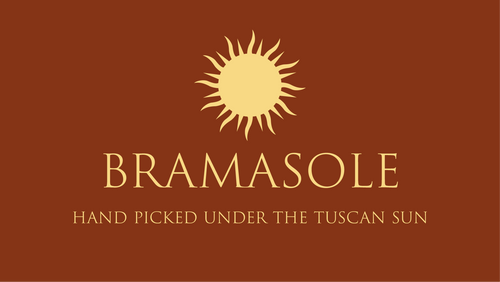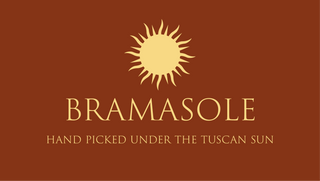It’s Almost All About The Polyphenols!
We spent a good part of February pruning our olive trees. Many on the terraces around our house were planted when the house was built in the 18th century. So this winter pruning has been going on a long time! The branches will burn hot in the fireplace, and the ashes can go back to the ground as fertilizer. Nothing wasted.
You who have been buying Bramasole Olive Oil regularly are an extremely discerning group. I don’t need to convince you of the many values of our oil, how its flavors of Tuscany are the closest thing to being there, and how it’s the healthiest oil on the planet.
An olive is a fruit. Its oil is not to be confused with “vegetable oils”—soybean and corn. Or “seed oils,” such as sunflower or canola (Canadian Oil Low Acid) from rapeseed. These vegetable and seed oils are commonly extracted using solvents—hexane in particular, a chemical made from crude oil. If you’ve been using oils other than the most-recent-harvest extra virgin olive oils, take a moment to watch a few videos on YouTube about the difference in the processes. A few producers of seed oils who are using other methods for production—organic, non-GMO—are safer for the consumer and the environment. But the chemical extraction process itself is why so many of these oils are inexpensive. And unhealthy (remember palm oil and partially hydrogenated corn oil?).
And then on bottles on the grocery store shelves is a nebulous term: “olive oil,” shorthand for second or third pressing. That is, a process using heat and/or chemicals. “Extra virgin” guarantees nothing, if the other information on the label is vague. If the harvest date and provenance aren’t stamped on the label, don’t buy it, if you’re thinking you’re buying a healthy product. You really haven’t any idea where and when the olives were picked and pressed.
Which brings me to polyphenols, which exist in abundance in Bramasole Olive Oil. Polyphenols are naturally occurring compounds that have many claims for health—from reducing or slowing down the progress of cardiovascular diseases, helping regulate the immune system, and producing anti-inflammatory and antioxidant actions. Bramasole Olive Oil has a high polyphenol count—the 2022 harvest was close to 400 mg/kg. The standard polyphenol count for extra virgin olive oil starts at 250 mg/kg.
Any oil, including olive oil, that has used high heat to extract the oil, has essentially destroyed most healthy polyphenols. And the misconception (outside of Italy) is that all extra virgin olive oil is healthy. Most commercially available evoo cannot claim the health benefits our oil has.
You who have been buying Bramasole Olive Oil regularly are an extremely discerning group. I don’t need to convince you of the many values of our oil, how its flavors of Tuscany are the closest thing to being there, and how it’s the healthiest oil on the planet.
An olive is a fruit. Its oil is not to be confused with “vegetable oils”—soybean and corn. Or “seed oils,” such as sunflower or canola (Canadian Oil Low Acid) from rapeseed. These vegetable and seed oils are commonly extracted using solvents—hexane in particular, a chemical made from crude oil. If you’ve been using oils other than the most-recent-harvest extra virgin olive oils, take a moment to watch a few videos on YouTube about the difference in the processes. A few producers of seed oils who are using other methods for production—organic, non-GMO—are safer for the consumer and the environment. But the chemical extraction process itself is why so many of these oils are inexpensive. And unhealthy (remember palm oil and partially hydrogenated corn oil?).
And then on bottles on the grocery store shelves is a nebulous term: “olive oil,” shorthand for second or third pressing. That is, a process using heat and/or chemicals. “Extra virgin” guarantees nothing, if the other information on the label is vague. If the harvest date and provenance aren’t stamped on the label, don’t buy it, if you’re thinking you’re buying a healthy product. You really haven’t any idea where and when the olives were picked and pressed.
Which brings me to polyphenols, which exist in abundance in Bramasole Olive Oil. Polyphenols are naturally occurring compounds that have many claims for health—from reducing or slowing down the progress of cardiovascular diseases, helping regulate the immune system, and producing anti-inflammatory and antioxidant actions. Bramasole Olive Oil has a high polyphenol count—the 2022 harvest was close to 400 mg/kg. The standard polyphenol count for extra virgin olive oil starts at 250 mg/kg.
Any oil, including olive oil, that has used high heat to extract the oil, has essentially destroyed most healthy polyphenols. And the misconception (outside of Italy) is that all extra virgin olive oil is healthy. Most commercially available evoo cannot claim the health benefits our oil has.

